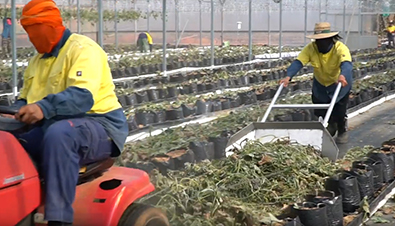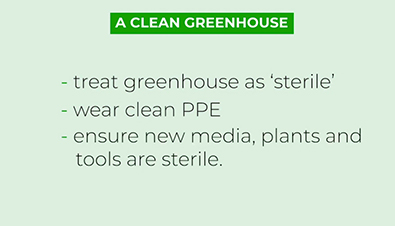Read the latest information on
Foot-and-mouth disease

The best way to avoid diseases being transferred from one crop to the next is to clean and disinfect the greenhouse between crops.
The protected cropping industry in Australia is growing, with more and more producers using greenhouses to grow vegetables and flowers.
One of the benefits of growing under cover is that it’s possible to readily exclude and control pests and diseases. An important pest control point in the cropping cycle is the changeover period between one crop and the next.
Once a crop grown in a greenhouse is finished, it is important to completely clean out the greenhouse in preparation for the next crop. This is the best way to avoid diseases being transferred from one crop to another.
A video on cleaning and disinfecting greenhouses – one of the Protected Cropping Toolkit – gives step-by-step instructions on how to do this.
The videos were developed to support the protected cropping industry as part of a VegNET NSW project in partnership with Hort Innovation, in partnership with Applied Horticultural Research.
Before you start, lower the greenhouse temperature to provide easier conditions for workers. Also, ventilate the greenhouse, and make sure workers are wearing appropriate PPE when handling chemicals.

Once fully cleaned, only people who are dressed in appropriate PPE should be allowed to enter the greenhouse.
Once fully cleaned, the greenhouse should be treated as sterile. Only people who are dressed in appropriate PPE should be allowed to enter. New growing media, plant material and clean trolleys should only be placed in the greenhouse after they have been cleaned and disinfected.
Other videos in the Protected Cropping Toolkit series cover greenhouse layout, planning and setup, irrigation, nutrient management and key pests and diseases. The video series can be watched on YouTube.
Protected Cropping Toolkit video series
Protected Cropping Toolkit – Episode 5 – Cleaning & Sanitation